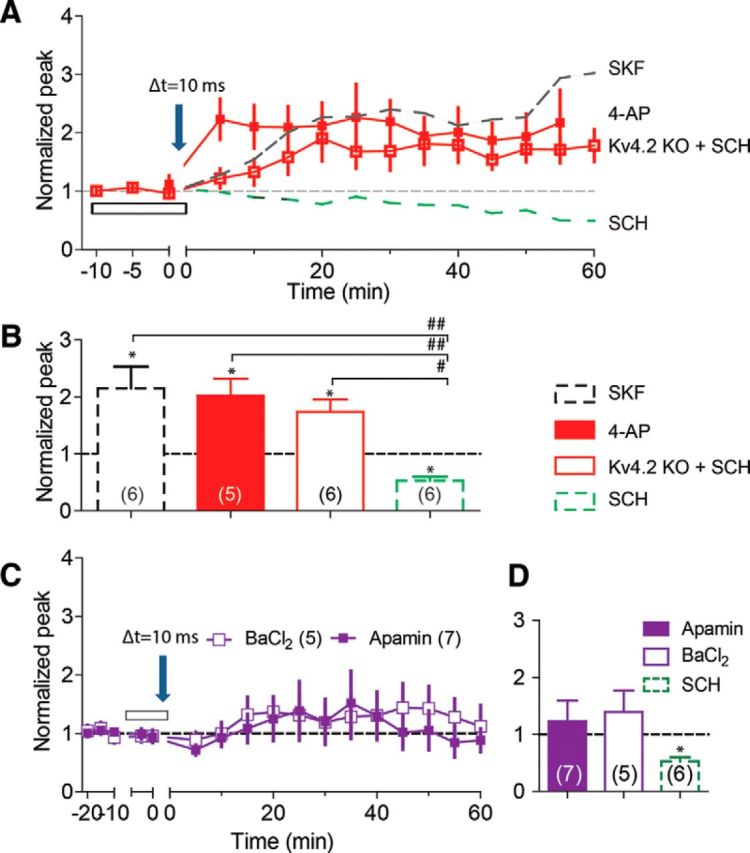Figure 7.

Effects of inactivation of IA and non-IA potassium channels on tLTP induction. A, The 10 ms protocol induces tLTP in slices from Kv4.2 KO mice even in the presence of SCH (red open box), but it induces LTD in slices from wild-type control mice (green dashed line taken from Fig. 2C) in the presence of SCH. The same protocol induces tLTP in slices from wild-type animals in the presence of IA inhibitor, 1 mm 4-AP (red filled box). For comparison, the 10 ms protocol in the presence of SKF induces comparable tLTP in slices from wild-type control mice (black dashed line taken from Fig. 3A). B, Summary bar diagrams illustrating the effects of SKF, 4-AP, Kv4.2 KO, and SCH on tLTP induction by the 10 ms protocol. C, Neither SK inhibition (with 100 nm apamin, purple filled box) nor Kir inhibition (with 100 μm BaCl2, purple open box) significantly supports tLTP induction by the 10 ms protocol. The downward arrow indicates the application of the 10 ms protocol, and the open bars indicate the drug application. D, Summary bar diagrams illustrating the effects of apamin, BaCl2, and SCH on tLTP induction. *p < 0.05 compared with the baseline, and #p < 0.01, ##p < 0.005 comparison between the indicated two groups.
